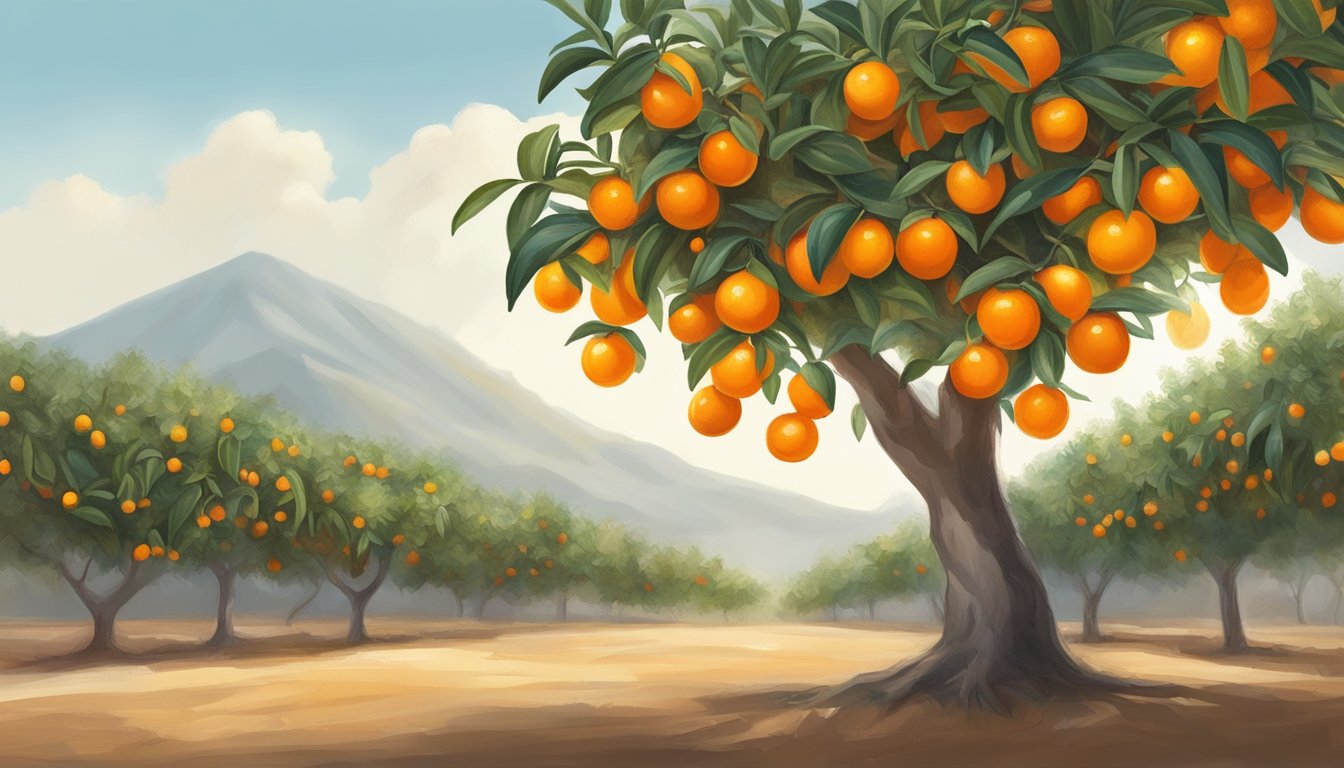Kumquats, those small oval-shaped citrus fruits, offer a unique culinary experience with their edible skin and tart-sweet flesh. Knowing when these tiny treasures are ripe ensures you enjoy them at their peak flavor. A ripe kumquat displays a vibrant orange color, yields slightly to gentle pressure, and emits a pleasant citrusy aroma.
Unlike larger citrus fruits, kumquats require a bit more attention to determine their readiness. Their size, typically 1 to 2 inches in length, remains consistent throughout the ripening process. The fruit’s texture provides valuable clues – a ripe kumquat feels slightly soft when gently squeezed, but not mushy. Overripe kumquats may have blemishes or feel too soft, indicating they’re past their prime.
Selecting perfectly ripe kumquats enhances their distinctive taste profile. The entire fruit is edible, with the sweet skin balancing the tart inner flesh. Ripe kumquats offer a burst of citrus flavor, making them ideal for snacking, preserving, or adding zest to various culinary creations.
Identifying Ripe Kumquats
Selecting perfectly ripe kumquats ensures the best flavor and eating experience. These small citrus fruits have unique characteristics that indicate their readiness for consumption.
Color and Texture
Ripe kumquats display a vibrant orange hue. Avoid fruits with green patches or dull coloration, as these indicate unripeness. The skin should be firm yet slightly yielding when gently squeezed.
Look for a smooth, glossy surface free from blemishes or wrinkles. A ripe kumquat feels heavier than its size suggests due to its juicy interior.
Size is another indicator – mature kumquats are typically about the size of large olives. Their shape is round with slightly flattened ends.
Sweet Skin and Tart Flesh
A unique feature of kumquats is their edible skin, which becomes sweeter as the fruit ripens. The peel should have a fragrant, citrusy aroma when ripe.
When tasted, a ripe kumquat offers a balance of sweetness from the skin and tartness from the flesh. This combination is a hallmark of perfect ripeness.
The interior flesh should be juicy and segmented like other citrus fruits. Ripe kumquats have a more pronounced tartness in the center, complementing the sweet outer layer.
Optimal Harvesting Period
Kumquats reach peak ripeness during a specific timeframe, offering the best flavor and texture. Knowing when to harvest these small citrus fruits ensures optimal quality and enjoyment.
Kumquat Harvest Season
The kumquat harvest season typically spans from late fall to early spring. This period varies slightly depending on the specific kumquat variety and local climate conditions. In most regions, kumquats begin to ripen in November and continue through March.
Some varieties may have a more concentrated ripening period, while others produce fruit over an extended timeframe. Nagami kumquats, a common variety, often ripen from December to April. Meiwa kumquats tend to mature slightly earlier, with harvests starting in November.
Climate plays a crucial role in determining the exact harvest season. Warmer regions may see earlier ripening, while cooler areas might experience a delayed or prolonged season.
Time to Harvest Kumquats
Identifying the precise time to harvest kumquats requires attention to several key indicators. Color is the most visible sign of ripeness. Ripe kumquats display a bright, vibrant orange hue. Unripe fruits are green or yellowish-green.
Texture also provides clues to ripeness. Ripe kumquats feel firm yet slightly soft when gently squeezed. The skin should have a slight give without being mushy.
Taste is the ultimate test of ripeness. A ripe kumquat offers a balance of sweet skin and tart flesh. If the fruit tastes overly sour, it may need more time to ripen.
Size can also indicate readiness. Fully mature kumquats typically reach 1 to 2 inches in length, depending on the variety.
Post-Harvest Handling

Proper handling of kumquats after harvest is crucial for maintaining their quality and extending shelf life. Careful inspection and appropriate storage techniques ensure these small citrus fruits remain fresh and flavorful.
Signs of Spoilage
Kumquats with soft or mushy spots should be discarded. Brown discoloration on the skin indicates decay. Mold growth, visible as fuzzy patches, is a clear sign of spoilage.
Check for unusual odors. Fresh kumquats have a pleasant citrus scent. Any sour or fermented smell suggests the fruit has gone bad.
Wrinkled or shriveled skin points to dehydration. While not necessarily spoiled, these kumquats are past their prime.
Short-Term Storage
Store kumquats at room temperature for up to a week. Place them in a bowl on the counter, away from direct sunlight.
For longer storage, refrigerate kumquats in a plastic bag. Puncture the bag to allow air circulation. They can last up to two weeks when refrigerated.
Keep kumquats dry to prevent mold growth. Avoid washing them until ready to eat.
Kumquats with attached stems tend to stay fresh longer. The edible skin helps preserve the fruit, making kumquats more resilient than other citrus varieties.
Health Benefits of Kumquats

Kumquats pack a nutritional punch in their small size. These tiny citrus fruits are rich in vitamin C, providing a boost to the immune system.
A single kumquat contains about 14% of the daily recommended intake of vitamin C. This antioxidant helps protect cells from damage and supports collagen production for healthy skin.
Kumquats are also a good source of fiber, promoting digestive health and helping to maintain steady blood sugar levels. Their fiber content may aid in weight management by promoting feelings of fullness.
The fruit contains essential oils in its peel, which may have anti-inflammatory properties. These oils could potentially help reduce inflammation in the body.
Kumquats provide a range of B vitamins, including thiamin, riboflavin, and niacin. These vitamins play crucial roles in energy metabolism and nervous system function.
The fruit also contains small amounts of minerals like potassium, calcium, and copper. These minerals contribute to various bodily functions, including heart health and bone strength.
Eating whole kumquats, including the peel, provides flavonoids. These compounds have antioxidant properties and may help protect against chronic diseases.
